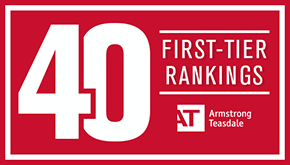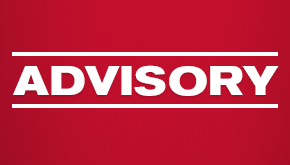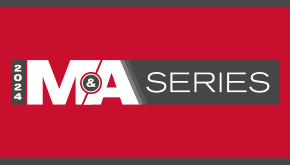OSHA Addresses Vaccine Mandates
On Aug. 13, 2021, the Occupational Safety and Health Administration (OSHA) updated its recommendations for the actions employers should take to keep their workplaces safe during the COVID-19 pandemic. Throughout the pandemic, OSHA guidance has evolved to comport with changing recommendations published by the Centers for Disease Control and Prevention (CDC), and that remains true in the most recent revision to OSHA’s recommendations for employers. While OSHA’s revised guidance includes a disclaimer that the guidance is “not a standard or regulation, and it creates no new legal obligations,” the recommendations published on Aug. 13 add to a growing chorus of governmental agencies pressing employers on the issues of employee vaccination and masking.
Vaccine Mandates
Perhaps the most notable addition to OSHA’s guidance is the explicit suggestion that employers should “consider adopting policies that require workers to get vaccinated or to undergo regular COVID-19 testing – in addition to mask wearing and physical distancing – if they remain unvaccinated.” This marks the first time OSHA has advocated for employers to impose vaccine mandates. Up to this point, the agency—like many of its federal and state counterparts—had pushed employers to “strongly encourage” vaccination among workers and to “facilitate” employee efforts to become vaccinated. OSHA’s use of the word “consider” in its recommendation is no doubt intentional and stops short of explicitly recommending a vaccine mandate or testing. Employers are advised, therefore, to do what the guidance recommends—consider—whether they want to mandate vaccines or testing at their workplaces.
While OSHA’s endorsement of vaccination mandates may give employers additional justification for requiring vaccine-hesitant employees to receive their “jabs,” employers should consider a number of issues as part of any plan to require employee vaccinations:
- Accommodation Requirements – Employers need to plan for accommodation requests from employees who seek exemption from the vaccine requirement based on disabilities or religious beliefs. Having in place a well-developed process for receiving and considering accommodation requests will be important to avoid the risks of ad hoc decision-making and failure-to-accommodate claims from employees.
- Local Laws – Employers should ascertain whether any of their employees are based in locations where local law prohibits employers—whether public or private—from requiring employees to become vaccinated or otherwise from discriminating against employees based on vaccination status. While a few jurisdictions have enacted such laws, most cover public/governmental employers and/or customer relationships (without referencing employee relationships).
- Union Issues – Employers with union-represented employees will likely need to give advance notice and an opportunity to bargain to unions representing their employees (absent a waiver of bargaining rights with respect to vaccine requirements).
- Wage and Hour Issues – Employers should consider and plan for compliance with wage and hour law requirements concerning time spent by non-exempt employees to comply with vaccination and testing requirements. The U.S. Department of Labor has taken the position that time spent receiving a vaccine or a COVID-19 test that is required by a non-exempt employee’s employer should be treated as compensable time.
- Data Privacy – Employers should plan for how proof of vaccination and proof of testing results will be collected and stored in a manner that complies with the Americans With Disabilities Act (ADA) and relevant data privacy laws. The EEOC has taken the position that proof of an employee’s vaccination constitutes confidential medical information covered by the ADA’s confidentiality restrictions. Thus, in designing a vaccination mandate, employers will need to develop a process for collecting and storing vaccine documentation in a manner that limits access to a limited number of HR or supervisor employees who have a legitimate need for such access and that prevents disclosure of such information.
Recommended Restrictions for Fully Vaccinated Employees
OSHA also now recommends indoor masking for all employees—including those who are fully vaccinated—in areas of substantial and high transmission rates for COVID-19 (which, as of this writing, comprise over 94% of U.S. counties). To assist employers in determining whether their worksites are subject to this new recommendation, OSHA’s guidance refers employers to a CDC webpage that provides the COVID-19 transmission rates for every county in the United States on a seven-day rolling period.
Additionally, OSHA’s new guidance adopts the following CDC recommendations announced in late July 2021 for fully vaccinated employees:
- wearing a mask in public indoor settings in areas of substantial or high transmission;
- choosing to wear a mask regardless of level of transmission, particularly if individuals are at risk or have someone in their household who is at increased risk of severe disease or not fully vaccinated; and
- getting tested 3-5 days following a known exposure to someone with suspected or confirmed COVID-19 and wearing a mask in public indoor settings for 14 days after exposure or until a negative test result.
Notably, the revised guidance does not include the following assertion from OSHA’s guidance published in June 2021: “Except for workplace settings covered by OSHA's ETS and mask requirements for public transportation, most employers no longer need to take steps to protect their workers from COVID-19 exposure in any workplace, or well-defined portions of a workplace, where all employees are fully vaccinated.” Although the omitted language had been viewed by many as an incentive for employers to achieve a 100% vaccination rate among employees as a means of relaxing pandemic-related safety measures in the workplace, the elimination of this distinction between employers with fully vaccinated workforces and those with a mix of vaccinated and unvaccinated employees underscores OSHA’s strong push to have employers mandate vaccinations for all employees.
OSHA’s guidance has not changed with respect to unvaccinated and “at-risk” employees, e.g., employees with conditions, such as a prior transplant, as well as prolonged use of corticosteroids or other immune-weakening medications, that may affect workers' ability to have a full immune response to vaccination. For the unvaccinated and “at-risk” members of the workforce, masking, social distancing and other safety measures that have been in place for well over a year remain in OSHA’s updated guidance for employers. Furthermore, the updated guidance does not alter OSHA’s recently published COVID-19 Emergency Temporary Standard that covers most health care workplaces.
Armstrong Teasdale’s robust employment and labor team will continue to monitor for updates and new guidance relating to COVID-19. Please contact one of the authors below or your regular AT attorney to discuss your specific situation.


































